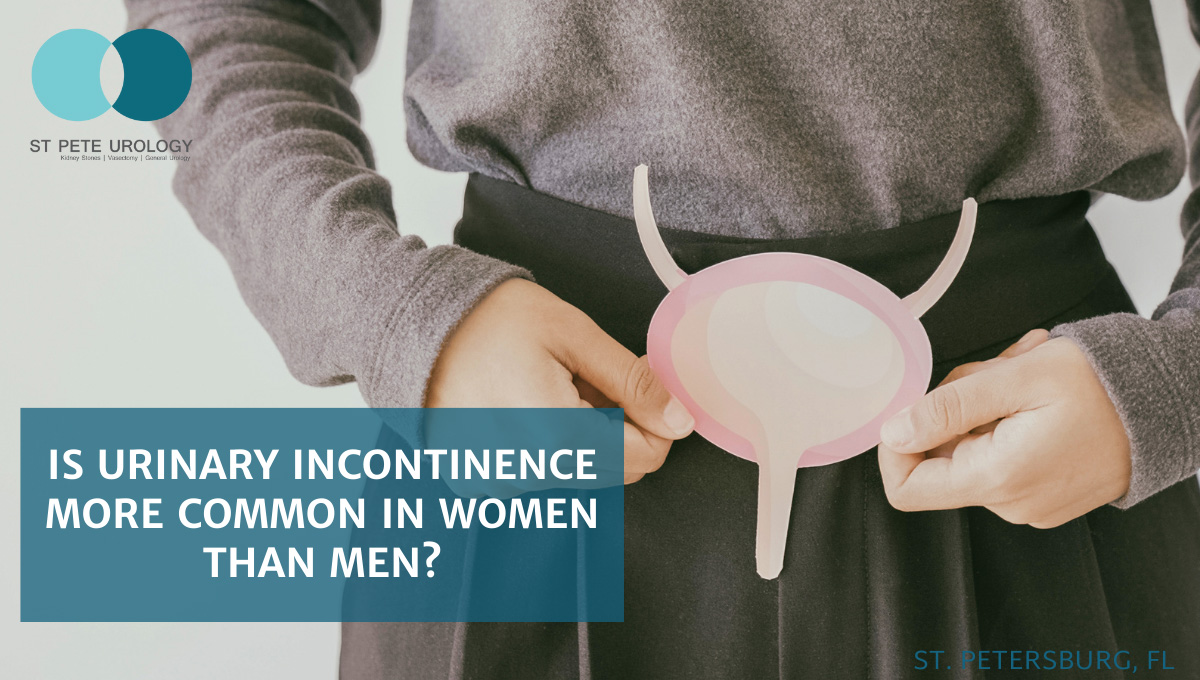3 Key Takeaways:
- Urinary incontinence is more common in women than men, but any gender can be affected.
- Risk factors and symptoms for urinary incontinence vary between genders, but the end condition is the same.
- There are various treatment options available for urinary incontinence, and expert advice and treatment can be obtained from a urology practice.
 Urinary incontinence, an issue that seems intricately personal, is far more commonplace than you think. Characterized by the involuntary leakage of urine, it’s not a disease per se, but rather a symptom that could indicate underlying health issues or result from certain lifestyle factors. Even though anyone can be affected, gender differences have been observed, with urinary incontinence being more common in women than men. This exploration will help you understand why.
Urinary incontinence, an issue that seems intricately personal, is far more commonplace than you think. Characterized by the involuntary leakage of urine, it’s not a disease per se, but rather a symptom that could indicate underlying health issues or result from certain lifestyle factors. Even though anyone can be affected, gender differences have been observed, with urinary incontinence being more common in women than men. This exploration will help you understand why.
Prevalence of Urinary Incontinence in Women
The truth is, urinary incontinence is undeniably more prevalent in women. Various studies suggest that nearly 30-60% of women will experience some form of urinary incontinence in their lifetime. This higher occurrence can be attributed to factors inherent to female biology.
Pregnancy and childbirth are significant contributors—during these phases, the pelvic muscles get strained, leading to increased susceptibility to urinary incontinence. Post-menopause, decreases in estrogen further weaken the pelvic floor muscles. Hormonal changes, too, play a role, contributing to bladder control issues.
The impact of these factors on a woman’s quality of life can’t be understated. The constant fear of leakage may lead to self-imposed isolation, embarrassment, and decreased participation in physical activities.
Prevalence of Urinary Incontinence in Men
Now, let’s shift our focus to men. Though urinary incontinence is less common, research shows it’s a reality for about 5-15% of men. Male bladder control issues often stem from prostate problems, bladder and urinary tract infections, or age-related muscle weakness.
The repercussions on a man’s lifestyle are as severe as they are for women, with a strong psychological impact, often leading to decreased self-esteem and social withdrawal.
Comparison of Gender Differences in Urinary Incontinence
While a cursory glance might suggest that urinary incontinence is a ‘women’s issue‘, a deeper examination reveals otherwise. Yes, prevalence and risk factors do vary, as do the symptoms experienced by each gender. But, the end condition remains the same—an involuntary loss of control over urinary functions.
What’s encouraging, however, is that numerous treatment options exist for both men and women. From lifestyle modifications and physiotherapy to medication and surgery, there are ways to manage and even resolve urinary incontinence.
Conclusion
In conclusion, yes, urinary incontinence does indeed affect more women than men. But the dialogue should not end there—it should merely start. Awareness and understanding of the issue are vital to both genders and will pave the way for more research and better treatments.
For expert advice and treatment, reach out to St Pete Urology, a leading urology practice in St Petersburg, Florida. As top-notch urologists in FL, they ensure personalized care for all your urinary concerns. Whether it’s urinary incontinence or any other urological issue, they are equipped with the latest technology and offer comprehensive care. Choose St Pete Urology. Choose health.
References:
- “Urinary incontinence treatment for men – Mayo Clinic Health System.” 26 Sep. 2022, https://www.mayoclinichealthsystem.org/hometown-health/speaking-of-health/treatment-options-for-men-with-urinary-leakage.
- “Urinary Incontinence in Women | Johns Hopkins Medicine.” https://www.hopkinsmedicine.org/health/conditions-and-diseases/urinary-incontinence/urinary-incontinence-in-women.
- “Incontinence During Pregnancy and After Childbirth – WebMD.” 9 Sep. 2023, https://www.webmd.com/urinary-incontinence-oab/pregnancy.





